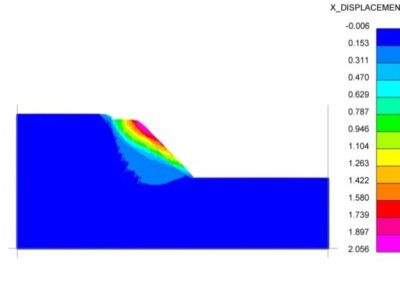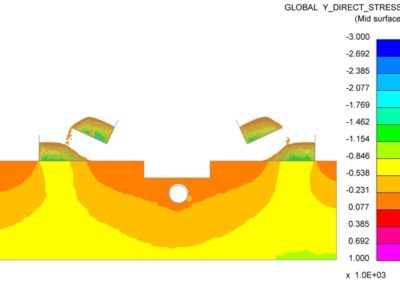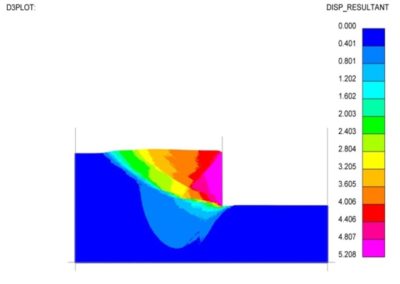SPH for Geotechnical Applications
The Smooth Particle Hydrodynamics (SPH) approach to address large deformation issues in geotechnical applicationsPROJECT TYPE
Internal Research & Development
LOCATION
California
OWNER
SC Solutions
SC Solutions has extensive experience and expertise in advanced analysis, including linear and nonlinear soil-structure interaction analysis of underground structures, partially embedded structures, surface-founded structures, and for slope stability evaluations. Through our robust internal research and development program, we continue to develop our knowledge and our technology to address deficiencies in the state of practice.
Modeling large deformations and discontinuities in soil media as well as post-failure soil response are big challenges for structural and geotechnical engineers using conventional tools and approaches. SC Solutions engineers investigated and verified an advanced meshless method – the Smooth Particle Hydrodynamics (SPH ) approach – to address these large deformation issues in geotechnical applications.
The SPH method can be used to simulate large deformation problems such as material transportation, impact/penetration, fracture and crack propagation, slope stability, land sliding, and fluid-structure interaction. Meshless methods can be coupled with conventional finite element formulation to efficiently model large problems with localized areas of discontinuities. The following simulations were successfully demonstrated using the SPH meshless method:
- Geotechnical failures such as land-slides and lateral spreading due to earthquake ground motions or rainfall
- Soil material deformation due to construction earthwork, including simulation of the soil compaction process and the effects of ground vibrations produced by compaction equipment on the adjacent structures
- Retaining wall and backfill soil interaction, including the explicit simulation of the active and passive failures of the backfill
SC Solutions continues to explore new methods and technology to better understand complicated phenomena and address real life project challenges.


